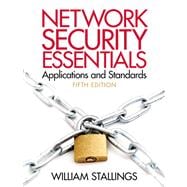A practical survey of network security applications and standards, with unmatched support for instructors and students.
In this age of universal electronic connectivity, viruses and hackers, electronic eavesdropping, and electronic fraud, security is paramount. Network Security: Applications and Standards , Fifth Edition provides a practical survey of network security applications and standards, with an emphasis on applications that are widely used on the Internet and for corporate networks. An unparalleled support package for instructors and students ensures a successful teaching and learning experience.
Adapted from Cryptography and Network Security, Sixth Edition, this text covers the same topics but with a much more concise treatment of cryptography.








